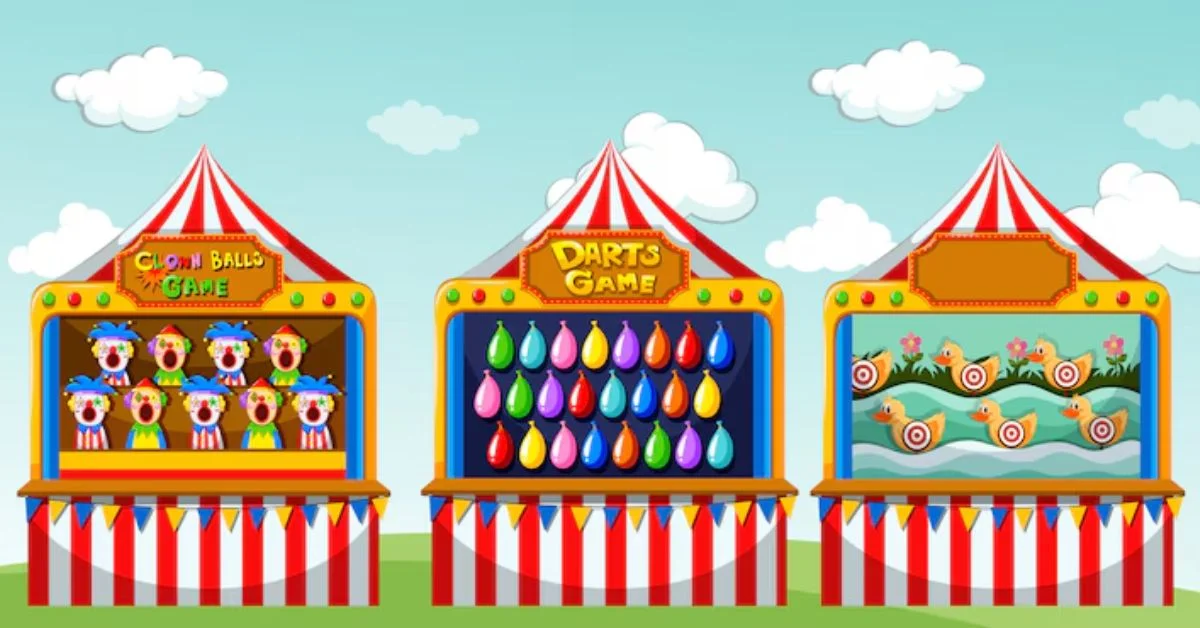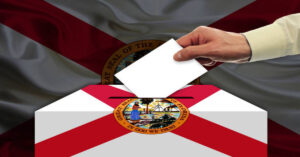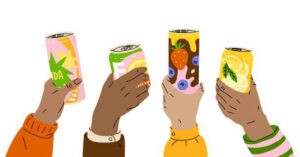There is something enduring about the glint of a spinning wheel, the clatter of tossed rings, and the soft murmur of a crowd navigating neon-lit paths under a warm dusk. These moments take place in one of the most iconic yet evolving spaces of Americana: the carnival booth.
But in 2025, the carnival booth is no longer a nostalgic relic or child’s distraction. It has become a medium—a blend of interactive art, gamified commerce, local storytelling, and even micro-entrepreneurship. Whether set up in a school fundraiser, county fair, tech-themed festival, or pop-up urban plaza, the modern carnival booth is a space for both imagination and innovation.
This article takes a deep dive into how carnival booths have evolved, what it means to design one in the present day, and why they still matter in a digital-first world.
What Is a Carnival Booth, Really?
At its most traditional, a carnival booth is a small, self-contained unit within a larger fair or festival, typically offering a game of chance or skill, a food item, or a small product for sale. Think: knock down the cans, spin the wheel, or catch the duck.
But in 2025, the carnival booth has become a modular platform—a compact, customizable experience zone that can serve a dozen different purposes: gamification, education, marketing, fundraising, community engagement, or pure entertainment.
From food vendors at music festivals to mental health awareness games at school fairs, the carnival booth has transcended novelty to become something deeply relevant.
READ MORE: Understanding Nahttypen: The Essential Guide to Seam Types in the Modern World
The Evolving Purpose of Carnival Booths in 2025
In today’s world, every square foot of public space is increasingly interactive and purpose-driven. The carnival booth reflects this evolution.
1. Micro-Entrepreneurship and Local Economies
Many booths now serve as entry points for creators and small business owners. From craft soap vendors to vintage arcade restorers, booths offer low-barrier, high-impact engagement with potential customers.
2. Educational Outreach
Schools and nonprofits use booths as educational stations. Picture a “Spin-the-Wheel of Science” game to teach kids about climate change, or “Financial Literacy Pong” where cups reveal tips behind each hit.
3. Digital-Physical Hybrids
Some booths now feature AR overlays, mobile app integration, or NFC tap-to-play mechanics that track scores, issue digital tokens, or unlock discounts.
4. Cultural Preservation
At cultural festivals, booths serve as interactive storytelling platforms—hosting games rooted in folklore or displaying ancestral art forms through tactile experiences.
The carnival booth is no longer “just” a booth. It’s a micro-narrative space.
Designing a Modern Carnival Booth
To design a carnival booth in 2025 is to design an experience. Here’s how creators are thinking about booth design today:
1. Theme as Narrative Anchor
Gone are the days of generic “ball toss” games. Now, each booth has a clear concept:
- “Operation Save the Planet” (ecology education)
- “Emoji Expression Zone” (mental health check-in)
- “Vintage Pixel Pong” (nostalgic gaming with modern tech)
The theme not only draws people in—it justifies the interaction.
2. Sustainability in Materials
Most booths now adhere to eco-conscious guidelines:
- Modular bamboo frames
- Solar lighting systems
- Recycled fabric backdrops
- Digital signage to reduce paper waste
Sustainability is a brand value, not a feature.
3. Inclusive Design
Booths are being designed for all:
- Wheelchair-accessible setups
- Visual cues for neurodivergent players
- Multilingual signage
- Volume controls and sensory-sensitive areas
Inclusion isn’t optional—it’s part of the carnival DNA.
4. Modular Mobility
Booths are now mobile-first. Foldable structures, collapsible frames, and QR-code-based scoring make transport and setup a one-person operation if needed.
READ MORE: RemixPapa: Unpacking the Rise of a New-Age Remix Culture Platform
Technology and the Carnival Booth: A Surprising Pair
In the age of AI and augmented reality, even the humble carnival booth has caught up—with elegance and restraint.
Gamification + Data Collection
Organizations use booths to gamify feedback collection. Instead of filling out a survey, users spin a wheel and get rewarded for participating in a quick poll. The system logs anonymized data.
RFID Wristbands and Digital Coins
Festivals often integrate RFID or NFC wristbands that participants can tap to play, earn points, or even donate to a cause featured at the booth.
AR Filters and Avatars
Some booths offer a selfie station with custom AR filters tied to the booth theme—part experience, part social media marketing.
Yet, the tech never overwhelms. The magic is in the physical-digital balance.
Food Carnival Booths: Where Nostalgia Meets Innovation
Food booths remain some of the most beloved. But today’s offerings go beyond deep-fried classics:
New Culinary Themes in Booths:
- Plant-based festival snacks like jackfruit sliders or beet corn dogs
- Hyper-regional specialties, such as Navajo tacos or Filipino isaw
- Augmented menus—scan an item to learn its story and allergens
- Zero-waste booths, serving drinks in edible cups or reusable vessels
In 2025, a booth might win you over not with smell alone, but with values you can taste.
Carnival Booths in Education: The Learning Game
Teachers and curriculum designers have embraced carnival booths as pop-up pedagogy zones. From middle school to university campuses, booths have become tools for:
- STEM engagement through challenge-based learning
- Civics education using role-play games
- Language learning via trivia wheels and memory tests
Every booth becomes a kinetic classroom, reinforcing knowledge through movement, play, and tactile interaction.
Permitting, Insurance, and Safety in 2025
Modern booths must adhere to evolving safety regulations and insurance standards. While casual setups still exist for home parties or school events, commercial booths must now ensure:
- Fire retardant materials
- ADA-compliance
- Electrical inspection reports (especially if solar panels or batteries are used)
- Liability insurance (minimums vary by state/city)
Thankfully, mobile apps and digital permit systems have streamlined the once-complex paperwork into a single digital workflow.
The Business of the Booth: Profit, Pricing, and Positioning
For those looking to turn a carnival booth into a small business or revenue stream, success depends on strategic placement and value design.
Revenue Models in 2025:
- Pay-per-play with digital tokens
- Freemium booths (first game free, additional chances paid)
- Tiered experiences (basic game vs. advanced levels)
- Product bundling (game win includes a merch voucher)
But more than income, modern booth creators focus on impact per interaction—what memory, emotion, or behavior shift is left behind?
Booths in Urban Design and Community Activation
City planners now use booths for community engagement and feedback. During urban renewal events or street design trials, booths offer:
- Urban planning games (e.g., SimCity-style zoning puzzles)
- Participatory art projects
- Story collection booths to gather oral histories
By embedding booths in civic projects, cities create bottom-up participation models that are more democratic and more fun.
Social Impact Booths: Games with Purpose
Nonprofits and advocacy groups have transformed booths into micro-activist spaces:
- Toss darts at issues (plastic, pollution, poverty) and win info cards on action steps
- “Wheel of Myths” game debunking vaccine misinformation
- “Guess My Bias” interactive booth using facial recognition and AI transparency
The goal isn’t perfection—it’s conversation, using play to open minds.
Carnival Booths in a Post-Pandemic World
The pandemic redefined how people interact. Touchless designs, crowd control, and hygiene are now default standards:
- UV-light sanitizers for shared objects
- Touch-free scoring
- Mask-compatible audio prompts
- Open-air spacing and modular airflow design
The booth, long seen as a contact zone, has become a thoughtfully designed encounter space—safe, social, and smart.
Conclusion: The Carnival Booth as a Cultural Artifact
The booth remains humble in size, yet vast in meaning. It is a canvas, a platform, a pop-up temple of play and exchange. In a world often driven by abstraction, algorithms, and overload, the carnival booth offers a return to presence—a momentary circle where rules are known, stakes are low, and joy is the goal.
It may be wrapped in lights and laughter, but behind the curtain is a structure of great intention—blending design, ethics, education, and entrepreneurship. The carnival booth is not going away. It’s going deeper.
FAQs About Carnival Booths
1. What is the purpose of a carnival booth in 2025?
Modern carnival booths serve multiple purposes—from entertainment and education to entrepreneurship, community engagement, and social impact.
2. How much does it cost to set up a booth today?
Costs range from $300 to $5,000 depending on materials, tech integration, and whether it’s commercial or community-oriented.
3. What are some trending booth themes today?
Popular themes include sustainability, digital wellness, cultural heritage, and STEAM learning—often presented through interactive storytelling.
4. Do I need permits or insurance to run a booth?
Yes, especially for public or commercial events. Requirements vary by region, but safety and liability coverage are essential.
5. Can booths be used for educational purposes?
Absolutely. Carnival booths are increasingly used in schools and universities as hands-on learning tools across disciplines.









